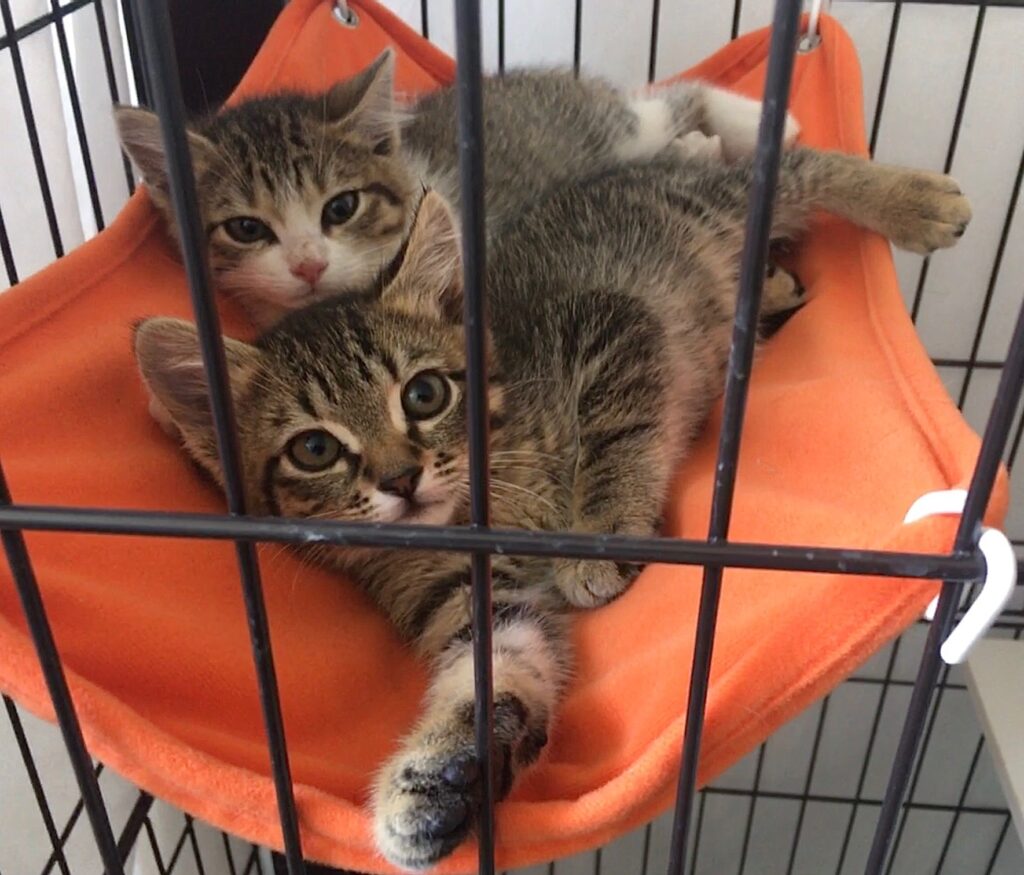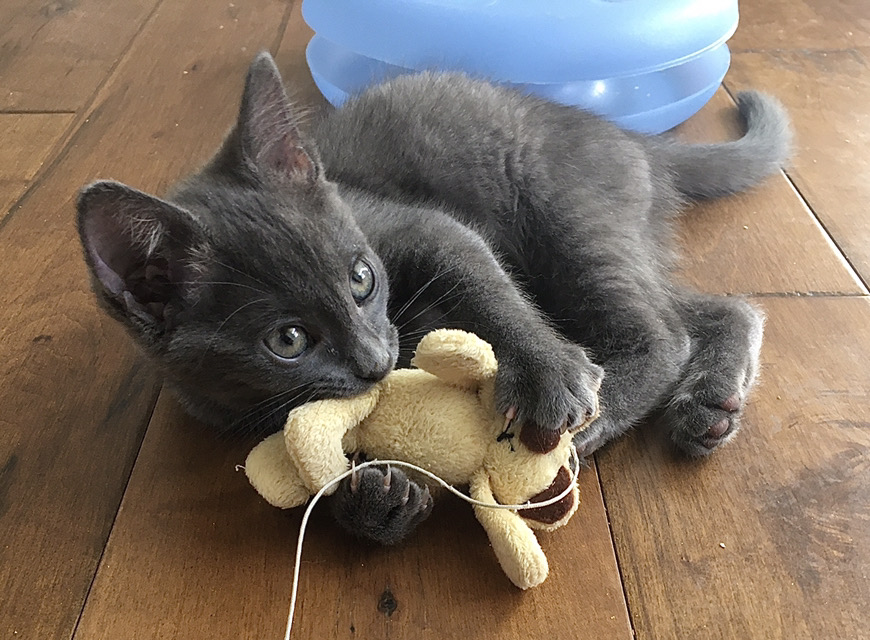
A kitten hisses as you approach the cage. Wait until she stops hissing, click and toss in a treat as close to her as possible, and quietly step back. It shouldn’t take long for her to realize that she gets two rewards when she’s not hissing: a treat and the scary person steps back.
Even if the kitten doesn’t eat the treat, she’s learning. If she eats, repeat your approach, click, treat and back away for two or three more times. If she doesn’t eat after the first few clicks, come back later and try again. Paws up if she ate the treats while you were gone. If she left the treats, carefully remove them and try again the next day with better treats.
What Makes Clicker Training So Effective?
The click lets you capture the exact moment that is being rewarded, and the kitten will make the association between her action and the click and treat. Once the desired behavior is learned, the kitten will let you approach without a click or treat.
Clicker training puts the kitten in control. She chooses to repeat the behavior because she understands that something positive will follow. In a shelter where she may feel like she has lost all control, this is powerful.
You might wonder why clicking is preferable to a “yes” or “good” to mark the behavior. It’s because the kitten will only hear the clicker sound during training, whereas “good” or “yes” are words she’ll hear in other situations. This can confuse her, and the words may lose their meaningfulness. In addition, people’s speech varies, but the sound of the clicker is consistent.
How Else Can Clicker Training Be Used?
When you’re clicker training, you may “catch” the kitten doing something you want repeated. For example, if your goal is for her to come to the front of the crate, click and toss in a treat if she takes even one step toward the front.
As the kitten begins accepting the click-and-treat game, up the ante by putting the treat nearer to the front of the crate. Step back and let the kitten finish the treat. Then, stand still and watch for any movement toward the front of the crate. Click exactly during that movement, give the treat, and step back. The kitten is learning that she can make you click and treat if she moves toward the front of the crate. Once she understands that a step toward the front of the crate is rewarded, wait for her to take two steps before clicking and treating.
When a behavior is understood, give it a name, or cue, such as “Come.” Once the cue is learned, it’s not necessary to click, and rewards can be given less frequently.
How Long Should a Clicker Training Session Last?
Sessions that are five minutes or shorter and more frequent will be more effective than longer, less frequent sessions. Keeping a training log may be helpful to monitor the kitten’s progress and, if you’re working with more than one kitten, reduce confusion on your part.
What Treat and When?
Pick a time when the kitten is hungry and a treat that is pea-size (you can break up a larger treat) and soft so the kitten can eat it quickly. That way she remembers why she got the treat and is more likely to repeat the behavior.
What’s a Target Stick and How Is It Used?
A target stick can be a plastic spoon (easy to disinfect) with a long handle. The goal is to get the kitten to touch her nose to the end of the handle, which you place near the crate door. Hold the spoon end and the clicker in the same hand. (When the clicker is held in the same hand as the spoon, the noise it makes can seem loud to a kitten. If the kitten is frightened by the noise, switch the clicker to the other hand so it’s farther away.)
If the kitten is scared by the handle, smear tasty canned food on the end. The moment she moves toward it, even if she just turns her face to it, click, remove the spoon and toss in a treat. The moment she finishes the treat, offer the handle again. If she doesn’t make any movement, place the handle an inch or two in front of her. Click and treat when she touches the handle with her nose.
Once she reliably touches the handle, offer it to her at a slight distance, so she has to move toward it. Are we having fun yet? Let the kitten absorb the experience, and train again in a few hours or the next day.
What’s the Best Way to Use the Target Stick?
Once the kitten is eagerly touching the target stick, raise the bar by getting her to follow the stick back and forth across the tabletop or onto your lap.
Do Kittens Need to Be Separated for Clicker Training?
Because they learn from one another, it can be beneficial to initially keep kittens together in  their crate and train them together. A more frightened kitten may see her bolder littermate getting treats and decide you’re not so bad after all. On the other hand, it may incite aggression between kittens so observe carefully to determine whether to train them together or separately.
their crate and train them together. A more frightened kitten may see her bolder littermate getting treats and decide you’re not so bad after all. On the other hand, it may incite aggression between kittens so observe carefully to determine whether to train them together or separately.
Clicker training is fun. It can be used to teach many practical behaviors, such as come, or tricks, such as “high five.” Practice clicker training with your personal pets to help you get the hang of it so you can effectively socialize frightened furballs. You’ll increase their chances of adoption into a forever home, and that’s worth lots of clicks and treats!
This article was reviewed/edited by board-certified veterinary behaviorist Dr. Kenneth Martin and/or veterinary technician specialist in behavior Debbie Martin, LVT.
Nancy Peterson worked as a registered veterinary technician, trainer of dogs for people with disabilities other than blindness, and was Community Cats Program Manager for The Humane Society of the United States. She retired in 2015 and currently serves on the boards of Neighborhood Cats and The National Kitten Coalition. Nancy volunteers as a foster and cat cuddler for her local animal shelter, Colorado Animal Rescue (CARE). During COVID, she became an avid birder and is working to protect cats and birds by building bridges between cat and bird advocates.
Resources
“Getting Started: Clicker Training for Cats,” by Karen Pryor
“Fearful Kitten Socialization 101”


